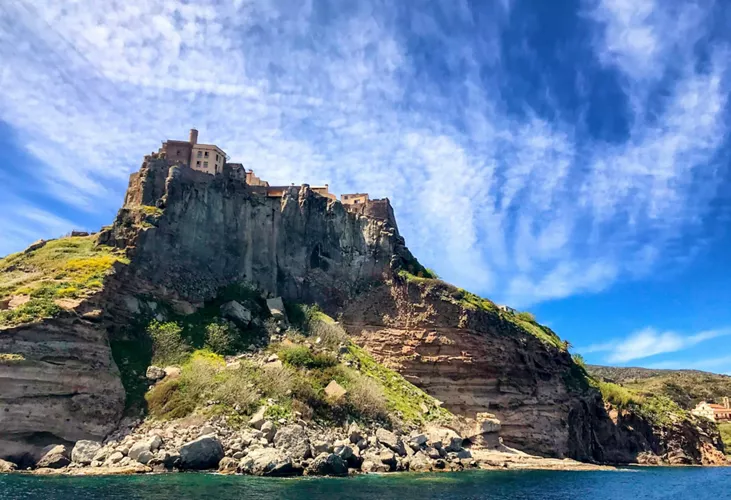This content was automatically translated. View the original text.

Overview
The only volcanic island in the Tuscan Archipelago
Between Corsica and Tuscany, in the Tyrrhenian Sea, lies the beautiful island of Capraia, which originated from a volcano and is largely mountainous. Its special position, further from the mainland than the other islands in the Tuscan Archipelago National Park, makes it one of Italy’s least populated areas. This makes it a true natural paradise, unspoilt and wild: coves, the remains of ancient towers and paths surrounded by greenery create a magical atmosphere.
Particularly beautiful areas include the Cala del Vetriolo, recognisable by its lava flows, where you can visit the cave and venture into underwater excursions, and the Cala della Mortola, near the port. The most famous attraction, however, is the Cala Rossa (Red Cove), which comprises the remains of an ancient volcanic vent, so called because of the intense colour of its rocks. Nearby is the Zenobito Tower, a perfect vantage point from which to admire the sunset dipping into the Tyrrhenian Sea.
Capraia, 57032 Capraia, Province of Livorno, Italy